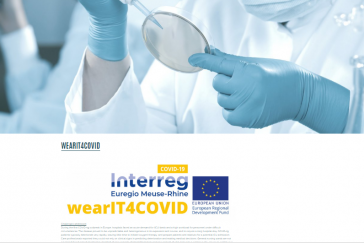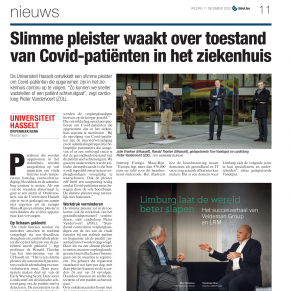During the first COVID-19 outbreak in Europe, hospitals faced an acute demand for (ICU) beds and a high workload for personnel under difficult circumstances. The disease proved to be unpredictable and heterogeneous in its expression and course and to require a long hospital stay. COVID-19 patients typically deteriorate very rapidly, leaving little time to initiate (oxygen) therapy, and prepare patients and relatives for potential ICU admission.
Care professionals reported they could not rely on clinical signs in predicting deterioration and making medical decisions. General nursing wards are not equipped for advanced monitoring; the standard of care consists of intermittent manual measurement of vital signs only 1-3 times a day. However, continuous measurement is crucial for early detection of deterioration and minimizes undesirable physical contact. In particular, respiratory rate (RR), oxygen saturation (SpO2), heart rate (HR), and variability (HRV) are identified as important parameters in COVID-19. Anticipating a potential second COVID-19 outbreak, decision support for timely escalation to medium or intensive care is urgently needed.
The need for in-hospital continuous vital signs monitoring was already addressed in the ongoing Interreg EMR project wearIT4health, in which a prototype of a decision support system at technology readiness level (TRL) 5 was developed and is currently tested in hospitals.
It consists of:
- A wearable continuous monitoring device measuring: ECG and PPG (to determine HR(V), RR, SpO2, blood pressure), activity & temperature
- Algorithms that, based on these parameters, estimate Early Warning Scores (EWS) to support care professionals in daily practice
- A monitoring platform to integrate the device parameters into hospital IT systems to be viewed and used by care professionals




